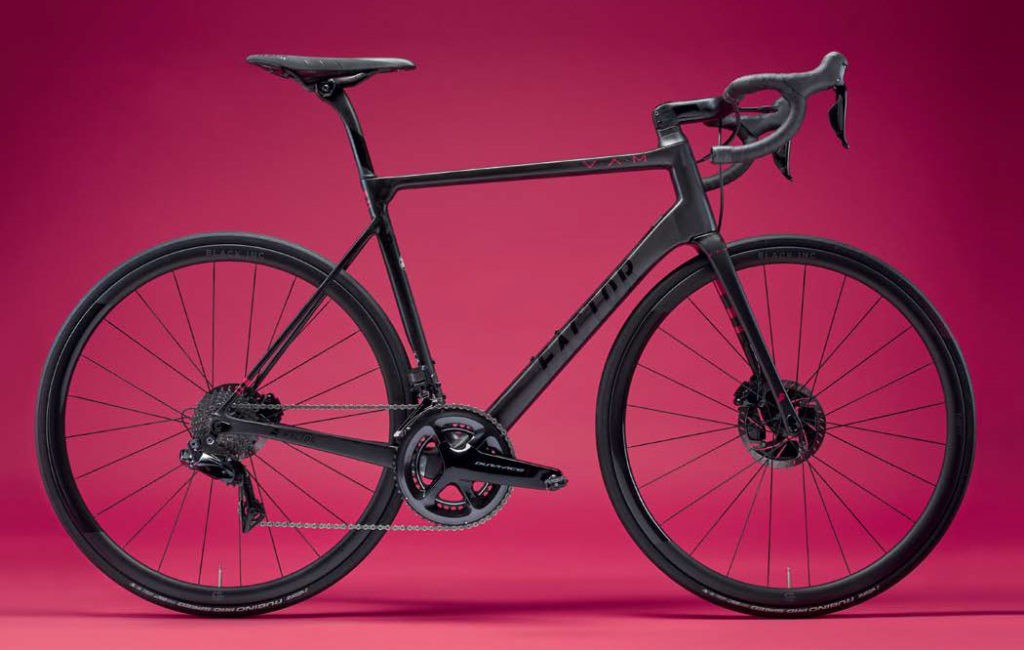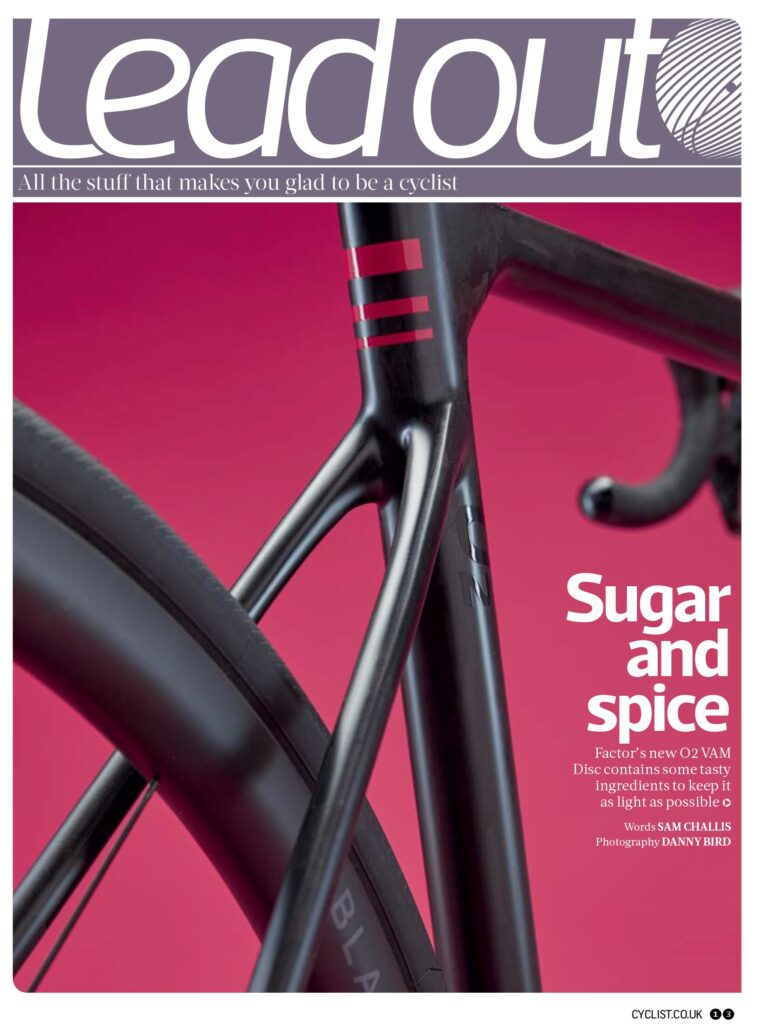Cyclist Magazine Lead Out – Factor O2 VAM

Cyclist Magazine’s Sam Challis speaks to Factor Owner, Rob Gitelis about the O2 VAM. This article appeared in Cyclist Magazine Issue 96, February 2020
Sugar and Spice
Factor’s new O2 VAM Disc contains some tasty ingredients to keep it as light as possible
Words: Sam Challis
Photography: Danny Bird
When someone refers to ‘VAM’, the chances are they are talking about how fast a rider can climb. It is an acronym for ‘velocità ascensionale media’, an Italian term that means ‘average ascent speed’. There is a reason it was coined in Italian – the infamous doctor Michele Ferrari came up with it to measure the performance of a certain American rider.
Despite its nefarious connotations, it’s an appropriate label for Factor’s new bike. The brand claims the frameset for its O2 VAM Disc hovers around the kilo mark, making for a super-lightweight rig designed for going uphill fast. ‘It was time to evolve the O2,’ says Factor co-founder and chief engineer Rob Gitelis. ‘Rim brakes were still very relevant when that bike came out. There was an O2 with discs, but that was a modified rim brake frame. We wanted to redesign the bike the other way around.’
You’d be forgiven for thinking the new O2 VAM used the same moulds as Factor’s original bike, such is its similar aesthetic, but Gitelis says the two designs are completely different.
‘There are four main changes,’ he says. ‘Tyre clearance has increased to 30mm; cable management is now much cleaner; the frame can now take both mechanical and electronic groupsets; and it has dropped a bunch of weight.’
‘A bunch’ in this case constitutes about 100g, which is a pretty decent amount off an already lightweight frameset. Gitelis says it took distinct alterations to O2’s fabrication methods to achieve such a decrease. Factor now uses latex-covered styrofoam mandrels during the frame moulding.
‘It is pretty unusual to do that,’ Gitelis says. ‘It allows us to use higher pressure in the moulding bladders, compressing the composite better so more resin is pushed out. You get the same stiffness from less material.’
The new production process is complemented by the inclusion of some choice additives in the O2 VAM’s carbon composite. First is Textreme, a ‘spread- tow’ carbon (unidirectional fibres woven together) that is more easily shaped into complex areas, meaning it can be used more efficiently.
‘It has been used in the past but as a cosmetic layer, which is bonkers,’ says Gitelis. ‘We use it as the deepest layer of carbon in the bottom bracket so we can create the junction using the least material. You can still see it if you want to – you just have to take the cranks out.’
Boron fibres have been employed, too. ‘They’re high modulus and great at coping with compression,’ says Gitelis. ‘We’ve used them in the bottom bracket, around the front derailleur braze-on attachment and around the seat clamp. By reinforcing those areas we could strip material out of other areas on the seat tube to introduce flex and improve comfort.’
Pitch carbon fibre is the final addition and has been used in the top tube and down tube. It is ultra-high modulus and therefore astoundingly stiff, but very brittle and exorbitantly expensive.
‘I don’t know of a more costly frame to make than the VAM,’ says Gitelis. ‘I’ve been doing this for 20 years and a lot of the time to break new ground it comes down to how willing you are to take risks, whether that be in new processes or materials. We’re not focused on a minimum margin like other brands are, just on making the best bikes.’
WorldTour Pedigree
Gitelis says feedback from the highest level of the sport is essential. Factor has sponsored AG2R-La Mondiale in the past, scoring third at the 2017 Tour de France under Romain Bardet. The brand will now outfit the newly promoted Israel Cycling Academy in 2020.
While the performance analysts employed by WorldTour teams are obsessed with aerodynamics, Gitelis says pro riders themselves are still more concerned with weight.
‘Our goal with the O2 VAM was to make a disc brake bike that came in under 6.8kg complete with a Dura- Ace groupset and normal finishing kit,’ he says. ‘That aside, the rhetoric surrounding aerodynamics is driving me crazy. You can prove anything you want in a wind-tunnel with the right parameters. Having the goal of weight is much more transparent, and better displays engineering prowess. It either weighs what I say it does, or it doesn’t.’
We’re not about to argue with his engineering prowess – this very bike tipped the Cyclist scales at 6.76kg.


© 2025 Factor Bikes. All rights reserved / Privacy Policy |Terms